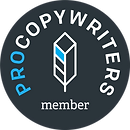I’m going to be so real with you, we’re having a bit of a tone shift today. Usually this blog focuses on providing helpful guides, how tos, what not tos, and tips for improving your SEO and website copy. There will be a bit of that later. But I’ve been thinking a lot lately about the inherent contradiction of Google pushing helpful content guidelines more and more with each Core Update while also integrating AI so heavily into its platform.
I can’t be the only one, but it really doesn’t sit right with me.
The subtle shift in Google’s guidelines
When the helpful content update 2022 hit, the SEO industry breathed a sigh of relief. Finally, a dedicated stance by Google against AI content. The August 2022 Helpful Content Update specified it would promote “content written by people, for people”. And in 2023, they casually and subtly dropped the “by people”.
2022 was the year I started freelancing. Little did I know that I’d be entering this industry on my own into an era of AI generated slop and the all seeing, all hallucinating Chat GPT. These initial helpful content guidelines were released about a week before I finished up my slides for my first ever talk at BrightonSEO. And I was THRILLED.
I spent my 20 minutes on stage in auditorium 2 talking about topic clusters and why I think they’re the best way for small businesses to create meaningful content that will support their SEO without their teams burning out. There was a lot of anxiety at the time around AI content and I couldn’t be happier that Google had taken, it seemed, an anti AI stance.
Just over a year later, the September 2023 Helpful Content Update arrived with a fresh and comprehensive set of guidelines and, as I mentioned, a subtle removal of the focus on human-created content.
Google’s love affair with AI
In retrospect, I imagine they had to change the wording while they worked behind the scenes on AI overviews. They couldn’t stand there and essentially say that content had to be created by people when very soon, they’d be dominating the entire first screen (or above the fold) of the SERPs with AI hallucinations.
Now, of course, not all AI overviews are hallucinations, but we’ve seen time and time again that an alarming volume of them are. An interesting June 2025 study from AI Multiple (the irony is not lost on me that a scathing report on AI hallucinations comes from an AI company itself), suggests that while all LLMs are hallucinating, Gemini (Google’s AI) is joint top of the list at 39%. It should be noted that this is a limited study across 16 LLMs each asked the same 60 questions, but it’s a robust enough dataset that it brings up a valid cause for concern.
And now in the US and rolling out in India, we have AI Mode. Google’s answer to ChatGPT within its own platform. Because for the first time in a very long time, Google had a competitor.
The difference is, in the same study, GPT4.5 has a hallucination rate of just 15%. Still far too high, but certainly more reliable than Gemini’s reported 39%.
Zero-click search and the progression of Google’s own content
Several years ago, Google ramped up its automated meta descriptions. This is where they pull content that fits the query from the URL in question and use that as the displayed description beneath the title instead of the one you have written yourself. I don’t personally have an issue with this as I can understand how it is genuinely helpful for the end user. Remove the need for folks to comb through an entire article by giving them the answers straight away.
Featured snippets and People Also Asked have also been great ways for Google to keep people on the SERPs and reduce the workload needed from end users to gain the answers they seek.
So perhaps AI overviews were the next logical step. While we’re well aware inside the SEO industry that the purpose of articles are not always to be helpful but to rank for queries we know could be profitable, a lot more research and effort goes into writing content than crawling a bunch of it and generating an accumulation of information that is incorrect 39% of the time.
You are the product, not the customer
There’s a bit of a joke in the SEO industry that when our parents or friends ask us what we do, some of us just say “I work for Google” because it’s easier than explaining the ins and outs of an ever more complicated industry. But it is true.
Google is a business before it is a service. The same can be said of Instagram, Amazon, TikTok, Netflix, etc. So your eyes on paid for ads makes you the product. This isn’t a new idea and almost a cliche at this point but it’s feeling more and more relevant as the years go by and Google (along with all the other big tech companies) shift more focus towards investors and away from end users.
The businesses who pay for ads on Google and other search engines are the customers. Those of us who work in SEO are the workers, bowing and adjusting to the every whim of our technological overlords, and everyone else who uses the search engines is the product.
So what does this mean for helpful content?
Well, the advice to create helpful content that genuinely supports people’s needs and answers queries is still relevant. While tons of people will adopt the information presented to them by AI overviews, there are many who are skeptical. And for those people, you need to create decent content that genuinely helps to solve their problems.
It’s important to remember that those of us who work in SEO can’t fix the increased-impressions-decreased-clicks problem. All we can do is help our clients to plan and create content that genuinely helps people. People often forget that SEO is just one part of the wider marketing machine. We still have email, social media, website copy, branding, PR, and all that other good stuff to think about.
The content you write for your business should never just be about SEO. And as AI encroaches more and more into the organic SEO space, it’s more important than ever to focus on the content marketing system as a whole.
When you’re writing (or getting someone else to write) your content, consider the following:
- How can I repurpose this into LinkedIn content?
- Can I audio-record some of this to use as voice over for video?
- Can I audio-record the whole thing to create a podcast and improve accessibility?
- Can I turn this into a script for video content?
- How can I share this to my mailing list?
- Is this something I can use to warm up leads?
- Does this support my wider branding, messaging, and ethos?
- How does this connect to other content I’ve already created?
- Does this balance informational and commercial search intent?
When you’re writing (or getting someone else to write) your website copy, ask yourself this:
- Is my target audience crystal clear?
- Will someone reading this feel like I’m speaking directly to them?
- What sort of relationship does this imply I’ll have with my customers/clients?
- Is it clear at a quick scan what this product/service is, how much it costs, and what processes are involved?
- Will people come away from a single page of my website knowing who I am and what I’m about?
- Does this copy make my audience feel something positive?
- Does this effectively communicate my brand positioning?
- Will my customers know the next steps?
Normally I end these blog posts with a kind of call to action. To encourage you to come to me for help. You can do that of course, I’m not going anywhere. But it feels disingenuous to shit all over big tech’s capitalist ideals and AI obsession and then sell you something.
So, I guess I’ll see you next time.


